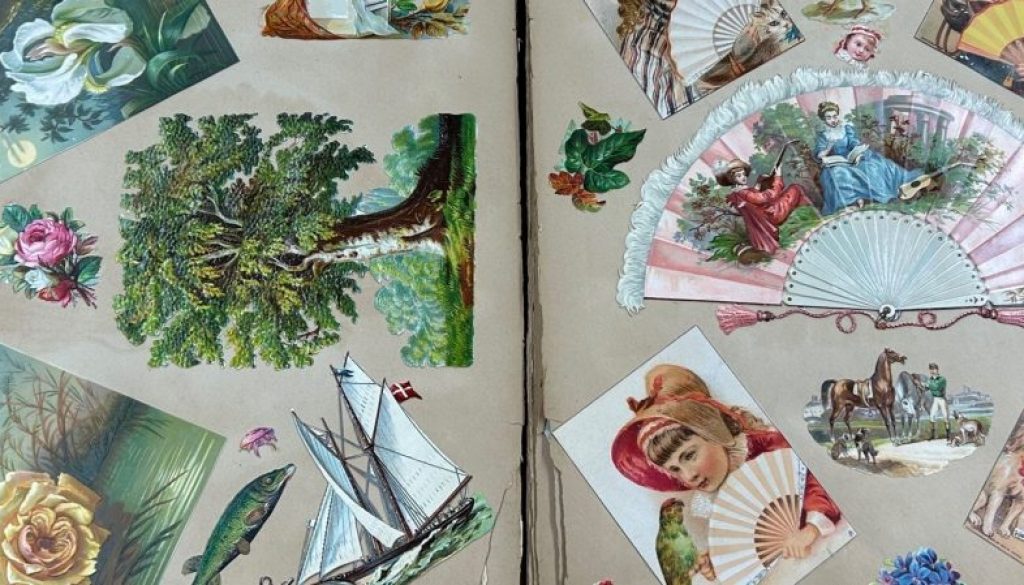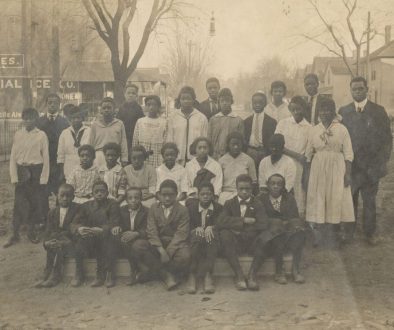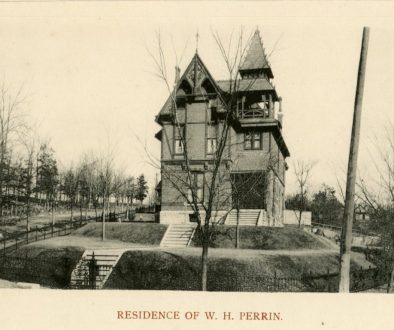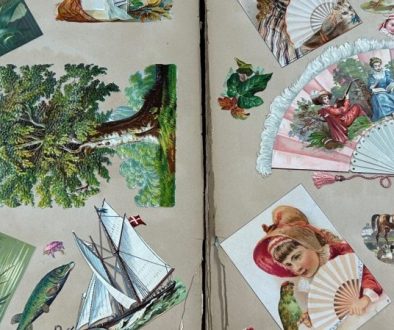Clipping, Collecting and Pasting: Assembling Scrapbook Narratives Part 2 of 3
By Mary E. Anthrop, guest blogger
Scrapbook creators of the 19th and early 20th century were often amateur historians. For the most part, they circumvented their own written words, but clipped, sorted and organized material into another original narrative. The scrapbook narrative of newspaper clippings captures a tale that would otherwise be lost or not readily found in another book. Although the author might not have been able to record their story in the traditional written word form, their novel account can reveal an authentic history and often a cultural history as well. Each of the newspaper-clipping scrapbooks, compiled by Susan T. Watt Richards, Rebecca Gordon Ball, Helen M. Jackson Gougar, and Clara Jenners Sweetser, record a unique historical narrative. The women likely created these narratives for their own personal review. These narratives, however, also have historical and cultural significance for modern researchers and deserve a closer look.
Scrapbook Narratives
Susan T. Watt Richard Scrapbook
The Susan T. Watt Richards scrapbooks are part of the Samuel K. Richards Collection. Samuel K. Richards served as chief engineer on the construction of local railroads in the mid-1800s. In 1873 he also served as the City Engineer of Lafayette and in 1883 he was elected Tippecanoe County Surveyor. In 1853 he married twenty-year-old Susan T. Watt of Clinton County. They raised their family of four children on the Richards family farm in Lauramie Township.
Only a few documents in the Richards Collection reveal details about the life of Susan T. Watt Richards (1833-1879). Several letters suggest Susan Watt hoped to be a teacher. Schoolmate correspondents implied that she attended a Quaker school, Western Manual Labor School, near Annapolis in Parke County, Indiana and she graduated from the private Goodwin Female Institute in Lafayette in 1851.(1) Her obituary in the Lafayette Journal was ambiguous. The newspaper notice described her life as an “active and useful one;” she had been a “devoted wife, loving mother and kind neighbor.”(2) A reviewer, however, might discover in her two circa 1850s scrapbooks, narratives that provide insight into the aspirations and life expectations of young rural women in the mid-1800s.
Susan Watt Richards pasted her undated newspaper clippings on the pages of 1835 account books. The brown and green speckled account books belonged to her father who operated a general store in Jefferson, Clinton County. These eight by twelve inch scrapbooks bulge to nearly an inch and one-half inches in thickness. While most of the cuttings are vertically adhered to the old account books, no space appears wasted. Richards glued small clips of interest to the edges of the pages. Unfortunately Richards did not write notations or comment on her pasted clippings.
An unusual insert in one of the scrapbooks may help a reviewer date that scrapbook. Susan Watt Richards attached an 1849 handwritten obituary or eulogy of a sixteen-year old youth. Was the young man a classmate of Susan at the Quaker School near Annapolis? Did Watt assemble the scrapbook when she was a sixteen or seventeen-year-old student? While she may not have written a journal, did she record in her scrapbook a narrative?
Susan Watt preserved scraps of wisdom and wit: “Why was Eve the first sugar planter? D’ye give it up? Because she raised Cain.” She also pasted several humorous commentaries on women’s fashions. Occasionally she inserted a sentimental print. The majority of Susan Watt’s newspaper clippings, however, appear to be a miscellaneous collection of contemporary romantic poetry: “Oh, I should Like to Marry,” and short stories: “A Story of Leap Year” – a young man fantasies about a proposal of marriage and “Juliet Stanmore: Love and Pride” – an elderly man reunites with a young love.
Although the varied clipping collection indicates that Susan Watt had ready access to a variety of newspapers, what commentary is missing may be as important as what she clipped and preserved. There are few historical notes of interest (a clipping on George Washington and another on Joan of Arc) and no serious discussions of contemporary debates over abolition, temperance or women’s rights. She also avoids science or religious dialogues. On the verge of adulthood perhaps Susan Watt was reflecting on the coming expectations of womanhood, especially the romantic side. May the reviewer conclude that Susan Watt’s experiences and expectations of womanhood focused on a domestic world?
Occasionally Susan Watt inserted a few housekeeping hints and the last pages of the scrapbook (dated 1851) contain a collection of handwritten recipes, poems and songs. Among the sixty-two handwritten ink recipes is a page of three wedding cake recipes! She also appears to have enjoyed such treats as: gingerbread, pancakes, temperance cake (two recipes), election cake, Christmas cookies and New Year’s cake. Susan does not appear to be the author of the poems and songs. The poems are somewhat somber; several reflect on death, such as: “Sweet Mary – weep no more for me,” death is a release from life’s struggles. The folk songs, however, seem appropriate for social sing-alongs. She copied the words for “Lilly Dear;” its refrain reads: “Farewell forever to ole Tennessee, Farewell, my Lilly dear, do not weep for me.” Another song tells the comic lament of a young girl about to be sent to a nunnery. (She has a lover, likes fashionable clothes, music and dancing. She doubts that the nunnery will accept her)! Did Susan expect to revisit these scrapbook pages in poignant moments of family and community sorrow and joy?
The second scrapbook, similar in format and size to the first, contains dated newspaper clippings from 1852-1854. Many of the items appeared in the Dollar Newspaper (Philadelphia). The reviewer should remember that by 1853 Susan Watt had married Samuel K. Richards. Did this second scrapbook serve a different purpose for Mrs. Richards than the first scrapbook? Like the first scrapbooks there are romantic poems, such as: “Those Eyes that were so Bright Love” and features: “Friendship, Love and Truth.” She also occasionally preserved curious historically features, such as: a mysterious memorial tribute to Aaron Burr; a report of the famous North Carolina Siamese twins, Eng and Chang; and a discussion of four Great Men – Alexander, Hannibal, Caesar and Napoleon Bonaparte. Most of this scrapbook’s contents, however, differ significantly from the first.
The overwhelmingly number of newspaper clippings in the second scrapbook refer to household and farm related discussions. Under the titles, “Housekeeper’s Department” and “Useful for the Housekeeper,” Mrs. Richards learned how to cure dropsy and diarrhea, preserve eggs, butter, and green color in vegetables (add soda to the water in which the vegetables are being cook), and destroy cockroaches and houseflies. She also wanted to know how to build a cistern, prevent or remove rust, and cure the sting of a bee (again apply soda). The list for practical farm knowledge is as equally long or longer. She wanted to understand why you should blanket a horse (the animal sweats), and how to treat sore teats on cows. Numerous newspaper clippings concern the care and feeding of chickens. Other preserved clippings also show her interest in sowing flower seeds and the origins of various plants.
Susan Watt Richards likely designed the second scrapbook to navigate the challenges of farm life, as faced by a young bride. Yet one clipping deserves some final attention. The newspaper story, “The Three Homes or The Magic of Neatness,” may best reveal a larger focus and intent in assembling the two scrapbooks. The clipping suggests that Susan looked beyond “how-to” practical advice for success. She also sought inspiration on “how to live.” “The Three Homes” describe the Jones, Yates, and Fields homes. Mrs. Jones is industrious, but unpleasant. Her diligent efforts to keep her home clean and tidy interfere with her duties, as a wife and mother. Her husband would prefer more peace and quiet and an even-tempered companion! Mrs. Yates keeps a cluttered home, spends her days gossiping and rarely has meals ready for her husband. Her husband begins to spend more time away from home, denying companionship from his wife. Mrs. Jones and Mrs. Yates turn to their neighbor, Mrs. Fields, for guidance. Carrie Fields appears to be the successful role model. She sets an example: “By making it (her home) neat, clean and comfortable, by letting him find his supper waiting for him, and his wife and children ready to welcome him and keep him company.” This scrapbook clipping perhaps foreshadowed the obituary description of Susan Watt Richards as, the “devoted wife, loving mother and kind neighbor.”
Rebecca Gordon Ball Scrapbook
The Rebecca Gordon Ball scrapbook, a photocopied collection, mainly consists of newspaper serials from the 1850s. Photocopied in the 1990s from the original, privately owned scrapbook, it is housed in the Cyrus Ball Family Collection. The original book measures 7” by 8” and contains newspaper clippings of poetry and serials. Of particular interest are the newspaper stories. Two columns of newspaper print appear on each page. The serials were divided into chapters and printed over several days. The only notations of significance are the autographs – Mrs. Cyrus Ball.
Rebecca Gordon Ball (1816-1900), a well-educated and cultured Philadelphia native, came to Lafayette in 1837. She married Cyrus Ball, a widower and successful entrepreneur in 1838. In the early 1850s Rebecca, under the pen name of “Rosa,” began publishing sentimental musings in the Lafayette Journal and the Lafayette Courier. When the national debate over slavery intensified, she composed anti-slavery poems and narratives. The four newspapers serials in the Ball scrapbooks include: “The Slave Mother,” (Written for the Lafayette Courier) by Rosa, eight pages, signed – Mrs. Cyrus Ball; “Henny: Or the Old Barn,” (Written for the Bucks County Intelligencer), by Rosa, thirteen pages; “The Free Papers: A Story of Slave Life,” (Written for the Lafayette Journal), by Rosa, thirty-three pages, signed – Mrs. Cyrus Ball; and “The Little Hunchback,” (Written for the Lafayette Journal), by Rosa, five pages.
The researcher should find the scrapbook intriguing. Rebecca Gordon Ball’s obituaries in 1900 little note her abolition activities. Except for Ball’s diligent efforts in preserving the clippings, the “Rosa” anti-slavery stories may have never received attention. The small scrapbook is a rare source of abolition literature, identifying a previously obscure activist. Historians who examine this collection of anti-slavery stories can perhaps glean new insight into the abolitionist role women played in small communities.
No entry in the Rebecca Gordon Ball scrapbook describes the why and when of the scrapbook’s creation. The 21st century reviewer must interpret the narrative clipped and organized by Rebecca Gordon Ball. Did Ball, as an author, assemble the scrapbook so she could critique her work at a later day? Or did Ball create the scrapbook to record her historical activity as a domestic abolitionist? Was Ball proud of her public efforts to emancipate the enslaved and concerned her labors would be overlooked?
Rebecca Gordon Ball did not journal in the scrapbook pages. But in signing her name, several times, by the pen name “Rosa,” she left no doubt of the authorship of the stories. Interestingly she also gave a clue to the inspiration of one of her stories and perhaps even her broader thought process in selecting writing themes. In the page before “The Slave Mother,” Ball pasted one of her poems from the Lafayette Journal, “The Fugitives.” This 1856 poem described the attempted escape of Margaret Garner’s family from Kentucky, across the Ohio River, to Cincinnati. Tragically Garner killed her youngest child to avoid her being remitted to a life in slavery. In another column on the page Ball pasted two newspaper articles, one from a Cincinnati newspaper. Each contemporary article told the tale of Margaret Garner. Could Ball’s scrapbook narrative expose how she selected the plots of her stories? Did she base her stories on real life scenarios? Rather than be fictional accounts of slavery, “Rosa’s” narratives in the scrapbook likely reveal Rebecca Gordon Ball’s realistic knowledge of the injustices and tragic circumstances of slavery.
(1) Anne O’Neill to Susan T. Watt, February 15, 1849, John A. Hunt to Susan T. Watt, December 11, 1850 and Jane to Susan T. Watt, July 20, 1851, Samuel K. Richards Collection, TCHA Archives.
(2) “Death of Mrs. Richards,” Lafayette Daily Journal, August 2, 1879.




